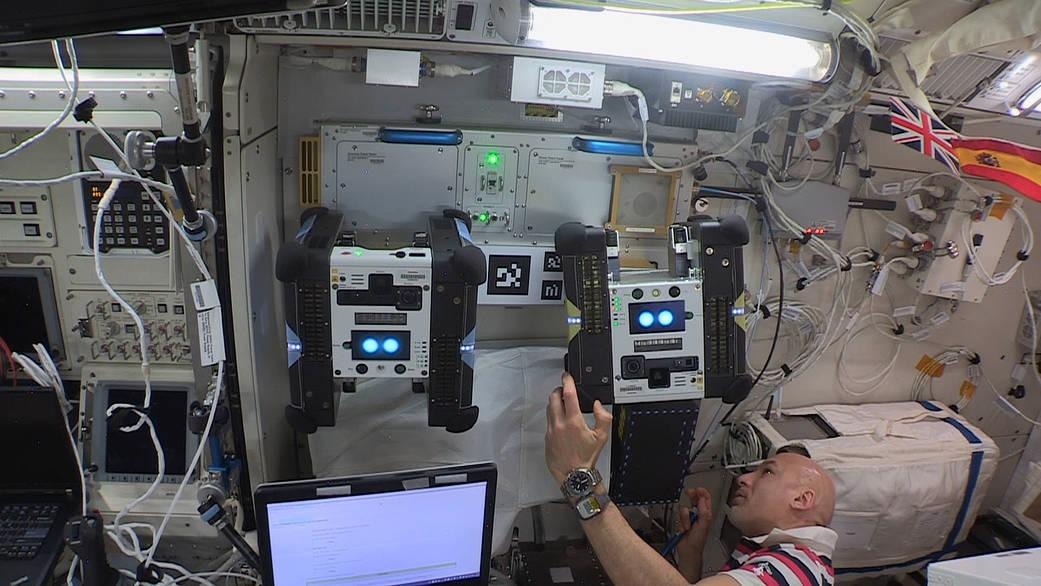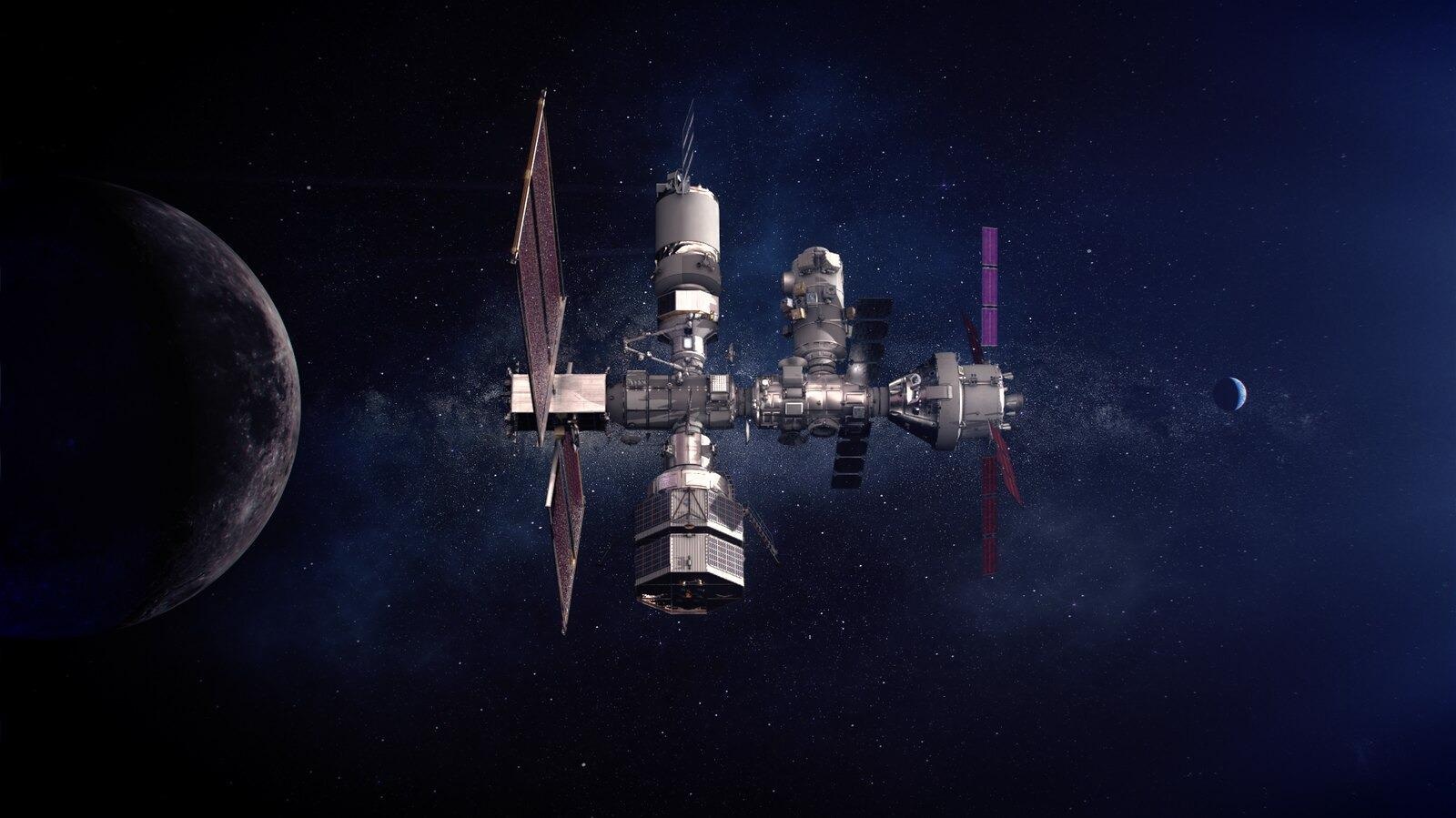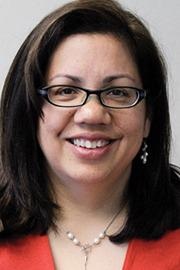I am the lead for the Intelligent Robotics Group at NASA’s Ames Research Center, located in the San Francisco Bay Area of California’s Silicon Valley.
Our main research activities focus on software rather than mechanical systems, working on the various levels of the "software stack" of a robot. This involves everything from low-level software that controls movement like how fast wheels turn, to intelligence and autonomy.
The group also looks at user interfaces, such as the commands that enable remote control of robots on the moon or within the International Space Station.
How did you become involved at Ames?
I have spent my entire career at NASA, and I am very lucky to be in my dream job.
When I was younger, I remember reading an article on female engineers at NASA for a school assignment. At the time, I didn't really know what an engineer was, so I looked it up and found that it was something that fit with what I was interested in.
At college, I decided to major in electrical engineering. When NASA came to recruit graduates, I was first in line for the interview and got a job offer right out of college.
What is your favorite thing about conducting research at Ames?
It's hard to pinpoint one thing, but I really enjoy the collegial nature of the work.
Robotics is such a multidisciplinary field that even for small projects, you need several people to cover the range of skills required. These individuals can come from a range of backgrounds, everything from computer scientists to electrical engineers, mechanical engineers, human factors and psychologists.
Just by the nature of robotics research, a multidisciplinary team is created, which can generate innovative ideas and technologies.
Can Robots Take Care of Spacecraft?
Can Robots Take Care of Spacecraft? © NASA's Ames Research Center/YouTube.com
How did you become involved with the Astrobee Project?
NASA’s Astrobee project is now handled by another group at Ames that runs it as a research facility on the International Space Station; my involvement was more in the development of the robot.

European Space Agency astronaut Luca Parmitano performed initial tests of the second Astrobee robot, named Honey, aboard the International Space Station. © NASA
Multidisciplinary research is more than just working with researchers in different fields but taking a global approach to collaboration. Have you experienced this in your career?
One of the benefits of working for NASA is that it involves a lot of interaction with other nations. The nature of the International Space Station, for instance, is that it is a collaboration between multiple countries.
For instance, my group developed the Astrobee robot and we have groups from all over the world that are running their technologies on the robot to test them out in space. The Japanese Space Agency even has a programming competition for school children and university students that runs on the Astrobee.
In my group, we are constantly interacting internationally.
What more could be done to improve connections between international communities, and what benefits can this bring?
At the individual level, it's important to get out there and meet people. This can include conferencing and attending workshops, especially international ones, to help build your network and broaden your understanding of current research activities.
Conversations with others can encourage collaboration, which can help to further research.
Diversity is crucial for innovation; it allows different viewpoints to be considered, and learning how to make them work together allows new ideas to be generated.
This year's theme for International Women's Day is #BreakTheBias, focusing on forging an inclusive, diverse, and equal future between genders. What would you say is the most important action to be taken to achieve this?
It is hard to say what is the most important, but I think a first step is for organizations to establish an infrastructure to make diversity and inclusion integral to their culture.
If it is not part of your core values, investment into things like training and mentorship will not happen as easily. Inclusion has recently been added to NASA's core values, along with others like safety and teamwork.
Secondarily, I think a diverse face to the public can be beneficial. For younger generations, it is important for them to be able to imagine themselves in these jobs and see somebody who looks like them there.
When you look at NASA's outreach, for example, you see a very diverse workforce.

© DOERS/Shutterstock.com
What experiences stand out to you the most in your career?
I have been involved in many projects over the years but Astrobee is probably my favorite because it has become a well-used system.
Firstly, it is actually flying in outer space, which is not a common outcome. Astrobee is also a popular research platform and has had engagement from younger communities through competitions.
One experience that has stood out to me was during my time as a Project Manager for Surface Telerobotics. Here, we developed a system where astronauts on the space station could control a wheeled robot on the ground at Ames.
The concept was termed as an ‘upside down payload’ and could be applied in situations where the Earth-based ground crew is trying to control something in a location where they do not have a direct line of sight, such as the far side of the moon, or the time delay is quite long such as on Mars. An astronaut in an orbiting vehicle could have much more interactive communication with a robot on the surface.
When we tested this system, I was able to talk to the astronauts on the station because I was the communications link between the space and ground crew.

A full view of Gateway that includes elements from international partners. Built with commercial and international partners, the Gateway is critical to sustainable lunar exploration and will serve as a model for future missions to Mars. © NASA/Alberto Bertolin
What are you looking forward to the most in the future of space robotics?
Personally, I am looking forward to some near-term missions that we have got to the moon.
I have had robots in orbit around Earth, and my group is heavily involved in NASA’s VIPER mission, which is a rover on the South Pole of the moon looking for water ice in the polar regions. Seeing the launch and resultant progression of this project is something I look forward to.
Along with this is the continued effort to establish collaborative robots on space stations like the Lunar Gateway. Crew time is the most precious commodity in space, so ideally they would not be completing maintenance chores. Instead, robotics could be used, acting as teammates to support the high-level work humans do.
About Maria Bualat
 Maria has been at NASA Ames Research Center since 1987, working in the mobile planetary robotics field since 1995. She served as a Deputy Group Lead for the Intelligent Robotics Group (IRG) from 2005 to 2019, and became the Group Lead in November of 2019.
Maria has been at NASA Ames Research Center since 1987, working in the mobile planetary robotics field since 1995. She served as a Deputy Group Lead for the Intelligent Robotics Group (IRG) from 2005 to 2019, and became the Group Lead in November of 2019.
Maria has managed projects for NASA’s Science Mission Directorate, Exploration Systems Mission Directorate, Office of the Chief Technologist, and Space Technology Mission Directorate including Astrobee and Human Exploration Telerobotics 2 (HET 2) Project, the Mars Technology Program’s ARC Rover Testbed project, and the Surface Telerobotics as part of the Human Exploration Telerobotics (HET) Project.
Banner images courtesy of Melitas & M.Style/Shutterstock
Disclaimer: The views expressed here are those of the interviewee and do not necessarily represent the views of AZoM.com Limited (T/A) AZoNetwork, the owner and operator of this website. This disclaimer forms part of the Terms and Conditions of use of this website.